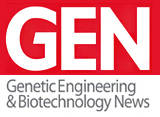미국 오하이오 주립 대학(Ohio State University) 종합 암센터 과학자들이 종양 내 유전적 변이를 측정할 수 있는 신기술을 개발했다. 이번 연구는 향후 의사들이 공격적인 암에 걸린 환자들이 약물 내성을 보일 것인지 알아내는데 도움이 될 것으로 기대된다.
연구진은 MATH(돌연변이-대립 종양 이질성, mutant-allele tumor heterogeneity)라고 불리는 새로운 채점 방법을 개발해서, 머리와 목에 암이 생긴 종양 내의 암 세포 사이에 유전적 변이를 측정했다. MATH점수가 높게 나왔다는 것은 다른 암 세포에 존재하는 유전자 돌연변이 중에서 많은 차이가 나는 종양이다.
높은 유전자 변이를 나타내는 암들은, 종양 내 이질성을 보였고, 환자의 낮은 생존율과 상관 관계가 있었다. 만일 예비 연구들이 이번 발견을 확인한다면, MATH 점수는 환자의 진단을 예측하고, 환자에게 가장 효과적인 치료 방법을 찾을 수 있도록 도울 수 있다. 단일 암 내에서 다중의 돌연변이 세포가 존재하면 임상 결과가 더 나빠질 수 있다는 것은 오랫동안 가정되어 왔던 것이다. 하지만 종양 학자들은 종양의 이질성을 임상 케어를 위한 결정에 사용하거나, 질병의 진단을 평가하는데 사용하지 않았다. 이는 임상에서 실제로 사용할 수 있는 쉬운 방법은 없기 때문이다.
이런 필요를 해결하기 위해서, James Rocco 박사팀은 MATH를 개발했다. MATH는 의사들이 환자의 종양에서 유전적인 변이를 보다 쉽게 측정하고, 치료를 위한 결정을 내리는 것을 돕게 위해 만들어진 것이다. 이번 연구는 “Intra-tumor Genetic Heterogeneity and Mortality in Head and Neck Cancer: Analysis of Data from The Cancer Genome Atlas”라는 제목으로 PLOS Medicine에 보고되었다. 연구진은 유전자 변이가 높은 암환자는 머리와 목 편평 상피 세포 암(HNSCC)에서의 사망률 증가와 관련이 있다는 것을 밝혀냈다.
Rocco 박사는 “종양 내의 유전적 변이가 사람들을 치료하는데 실패하는 이유가 무엇인지 설명할 수 있다. 높은 이질성 종양을 보유한 환자들은 암을 추진하는 돌연변이를 기본으로 하는 여러 가지 클러스터가 있는 것 같다. 그래서 이런 종양들은 특정 치료 방법에 이미 내성이 있는 몇 가지 세포가 있을 수 있다”고 말했다.
이번 연구에서, Rocco 박사팀은 암 지놈 아틀라스(TCGA, the cancer genome atlas)에서 저장되어 있는 305개의 HNSCC로부터 얻은 자료를 분석하기 위해 MATH 도구를 사용했다. 공개된 NIH 자료들은 2006년부터 파일럿 프로젝트로 시작되었으며, 지금은 33개의 종양 형태를 가진 11,000명 이상의 자료가 포함되어 있다. MATH 점수는 전체-옥솜 시퀀싱을 통해 TCGA를 얻은 자료이다.
연구진은 종양 내부의 이질성이 높은 것과 환자의 사망률이 증가하는 것과 관련이 있다는 것을 확신했다. MATH 점수가 각각10% 증가하면, 사망률도 8.8% 증가하는 것 같다고 연구진은 말한다.
연구진은 “이번 연구는 여러 기관에서 치료 받았던 수 백명의 환자로부터 나온 자료를 혼합한 것으며, 종양 내 이질성과 어느 형태의 암에서의 전체적인 생존율을 처음으로 문서화한 것이다. 우리는 이질성에 대한 단순히 계산된 MATH 메트릭스를 HNSCC와 다른 종양 형태의 예비 연구에 적용할 것을 제안한다”고 말했다.

GEN News Highlights : Apr 17, 2015
Novel Genomics Technique Could Predict Cancer Therapy Outcomes
Scientists at the Ohio State University Comprehensive Cancer Center have developed a new method for measuring genetic variability within a tumor that might one day help doctors identify patients with aggressive cancers that are more likely to resist therapy.
Researchers used a new scoring technique they developed called MATH (mutant-allele tumor heterogeneity) to measure the genetic variability among cancer cells within tumors from 305 patients with head and neck cancer. High MATH scores corresponded to tumors with many differences among the gene mutations present in different cancer cells.
Cancers that showed high genetic variability, i.e., "intra-tumor heterogeneity," correlated with lower patient survival. If prospective studies verify the findings, MATH scores could help identify the most effective treatment for patients and predict a patient's prognosis.
It’s long been hypothesized that multiple sub-populations of mutated cells within a single cancer lead to worse clinical outcomes; however, oncologists do not use tumor heterogeneity to guide clinical care decisions or assess disease prognosis because there is no single, easy-to-implement method of doing so in clinical practice.
To address this need, James Rocco, M.D., Ph.D., and his colleagues developed MATH to make it easier for doctors to measure genetic variability in patients' tumors and to help guide treatment decisions. Their study (“Intra-tumor Genetic Heterogeneity and Mortality in Head and Neck Cancer: Analysis of Data from The Cancer Genome Atlas”), reported in PLOS Medicine, confirms that high genetic variability with a patient's tumor is related to increased mortality in head and neck squamous cell carcinoma.
"Genetic variability within tumors is likely why people fail treatment," says Dr. Rocco, professor and John and Mary Alford Chair of Head and Neck Surgery. "In patients who have high heterogeneity tumors it is likely that there are several clusters of underlying mutations, in the same tumor, driving the cancer. So their tumors are likely to have some cells that are already resistant to any particular therapy."
For the current study, Dr. Rocco and his team used the MATH tool to analyze retrospective data from 305 head and neck squamous cell carcinoma patients from The Cancer Genome Atlas (TCGA). This NIH repository of publicly available data was launched in 2006 as a pilot project and now includes samples from more than 11,000 patients across 33 tumor types. The MATH score was calculated from data obtained by TCGA via whole-exome sequencing.
Researchers confirmed that high intra-tumor heterogeneity was related to increased mortality in this sub segment of patients. Each 10% increase in MATH score corresponded to an 8.8% increased likelihood of death.
“To our knowledge this study is the first to combine data from hundreds of patients, treated at multiple institutions, to document a relation between intra-tumor heterogeneity and overall survival in any type of cancer,” wrote the investigators. “We suggest applying the simply calculated MATH metric of heterogeneity to prospective studies of HNSCC and other tumor types.”
